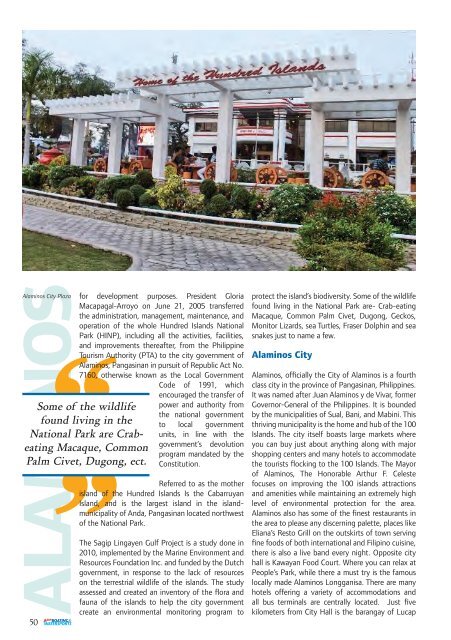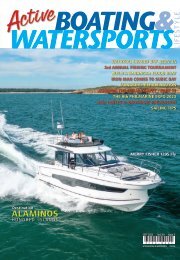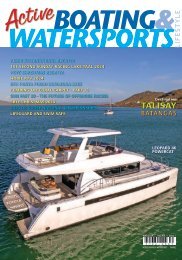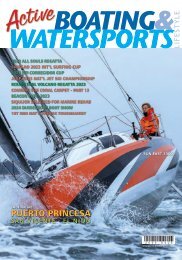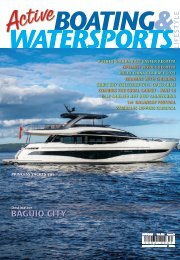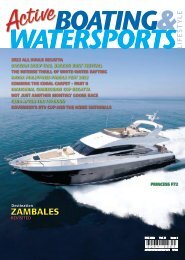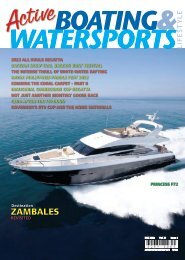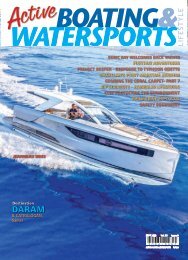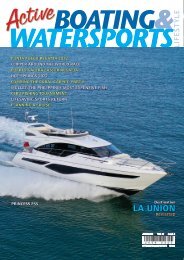ABW June 2017
Create successful ePaper yourself
Turn your PDF publications into a flip-book with our unique Google optimized e-Paper software.
Alaminos City Plaza<br />
50<br />
for development purposes. President Gloria<br />
Macapagal-Arroyo on <strong>June</strong> 21, 2005 transferred<br />
the administration, management, maintenance, and<br />
operation of the whole Hundred Islands National<br />
Park (HINP), including all the activities, facilities,<br />
and improvements thereafter, from the Philippine<br />
Tourism Authority (PTA) to the city government of<br />
Alaminos, Pangasinan in pursuit of Republic Act No.<br />
7160, otherwise known as the Local Government<br />
Code of 1991, which<br />
encouraged the transfer of<br />
Some of the wildlife<br />
found living in the<br />
National Park are Crabeating<br />
Macaque, Common<br />
Palm Civet, Dugong, ect.<br />
power and authority from<br />
the national government<br />
to local government<br />
units, in line with the<br />
government’s devolution<br />
program mandated by the<br />
Constitution.<br />
Referred to as the mother<br />
island of the Hundred Islands Is the Cabarruyan<br />
Island, and is the largest island in the islandmunicipality<br />
of Anda, Pangasinan located northwest<br />
of the National Park.<br />
The Sagip Lingayen Gulf Project is a study done in<br />
2010, implemented by the Marine Environment and<br />
Resources Foundation Inc. and funded by the Dutch<br />
government, in response to the lack of resources<br />
on the terrestrial wildlife of the islands. The study<br />
assessed and created an inventory of the flora and<br />
fauna of the islands to help the city government<br />
create an environmental monitoring program to<br />
protect the island’s biodiversity. Some of the wildlife<br />
found living in the National Park are- Crab-eating<br />
Macaque, Common Palm Civet, Dugong, Geckos,<br />
Monitor Lizards, sea Turtles, Fraser Dolphin and sea<br />
snakes just to name a few.<br />
Alaminos City<br />
Alaminos, officially the City of Alaminos is a fourth<br />
class city in the province of Pangasinan, Philippines.<br />
It was named after Juan Alaminos y de Vivar, former<br />
Governor-General of the Philippines. It is bounded<br />
by the municipalities of Sual, Bani, and Mabini. This<br />
thriving municipality is the home and hub of the 100<br />
Islands. The city itself boasts large markets where<br />
you can buy just about anything along with major<br />
shopping centers and many hotels to accommodate<br />
the tourists flocking to the 100 Islands. The Mayor<br />
of Alaminos, The Honorable Arthur F. Celeste<br />
focuses on improving the 100 islands attractions<br />
and amenities while maintaining an extremely high<br />
level of environmental protection for the area.<br />
Alaminos also has some of the finest restaurants in<br />
the area to please any discerning palette, places like<br />
Eliana’s Resto Grill on the outskirts of town serving<br />
fine foods of both international and Filipino cuisine,<br />
there is also a live band every night. Opposite city<br />
hall is Kawayan Food Court. Where you can relax at<br />
People’s Park, while there a must try is the famous<br />
locally made Alaminos Longganisa. There are many<br />
hotels offering a variety of accommodations and<br />
all bus terminals are centrally located. Just five<br />
kilometers from City Hall is the barangay of Lucap


